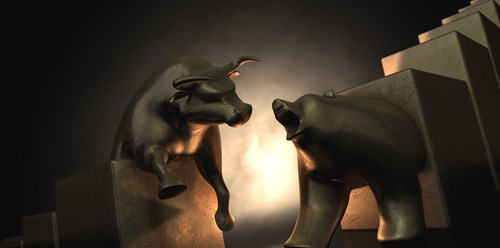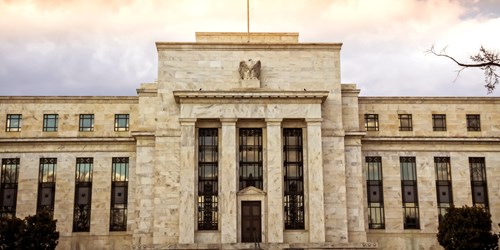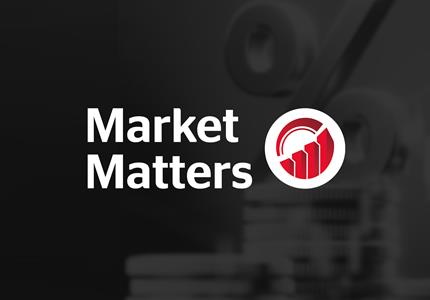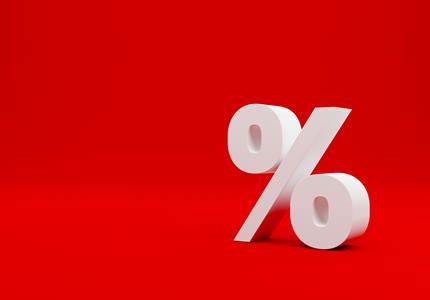

From inflation to growth scare
Ravenscroft chief investment officer Kevin Boscher reflects on a transitionary first quarter.
The first quarter of 2023 has seen plenty of drama but the general theme is that the global economic and market environment is in a volatile transition from an inflationary boom to a period of disinflation and weakening activity. Having started the year off strongly thanks to markets pricing in peak rates and an easier monetary policy stance, equities quickly sold off again mid-quarter as the Fed and other central banks indicated that the inflation fight had not yet been won and that further rate hikes would be required.
Government bonds, on the other hand, started to rally as growth faltered and concerns grew around the prospect of a tougher-than-expected recession caused by a Fed over-tightening mistake. The sudden appearance of a banking crisis in early March saw a renewed period of risk aversion as equites sold off and sovereign bond yields fell sharply. A prompt and strong reaction to the banking problems from the US and European authorities seemed to calm markets again and equities were able to recover some of their losses, although bond yields have ended the quarter significantly lower than their January levels.
A matter of opinion

There is an intense debate over whether the bear market in stocks is over or not and whether the US economy is headed for a “hard” or “soft” landing. The pessimistic camp believes that the banking crisis in the US is not yet over and that it will precipitate a recession, which will be deeper and longer than would otherwise have been the case. Consequently, although earnings expectations have been materially downgraded over recent months, stocks are not yet discounting the contraction in earnings that lies ahead. The bears also think that the US economy remains too strong and question whether inflation is falling quickly enough to persuade the Fed to pause, thus implying that rates will move and stay higher for much longer than markets currently expect, intensifying the recession and earnings hit.
The bulls, on the other hand, believe that inflation and rates have peaked and that as the Fed and other central banks pause their rate hikes and start to ease policy over the next few months, this will prove to be a very important catalyst for a sustainable rally in stocks and bonds. They also believe that as the Fed pivots, rates start to fall and global liquidity starts to improve, any recession will be relatively short lived, and investors will soon start to look through the gloom to an acceleration of activity later this year or early next.
I am in the “glass half-full” camp and lean towards the bullish argument for a number of reasons. There are clear signs that US economic activity is falling quite rapidly and that employment pressures are starting to ease as an increasing number of companies lay off workers and wage growth moderates. Together with evidence that consumers have largely drawn down on their pandemic- bloated savings and rents are turning lower, this should accelerate the disinflationary process and provide the Fed with the catalyst it needs to turn more dovish.
What the Fed is doing

In addition, a banking crisis is inherently disinflationary as banks are forced to shrink their loan books and reduce their balance sheets to improve their liquidity and protect their solvency. This hurts businesses, dampens consumer spending, and squeezes corporate investment, thus leading to a credit crunch and slower growth. Historically, the Fed has always eased quickly and aggressively whenever faced with a banking crisis to counter deflationary pressures and limit financial contagion.
This time around, inflationary pressures have forced the Fed to separate their roles of ensuring enough liquidity in the system whilst also tackling inflation, but as recession hits and disinflation accelerates, the Fed will be persuaded to act. Equites have been waiting for a Fed pivot for some time and stocks will likely be more sensitive to falling rates and easier financial conditions than weakening growth, since investors will quickly start to discount an improving growth outlook and rising liquidity will aid both economic activity and market sentiment.
It is important that the Fed, other central banks, and relevant authorities are committed to doing whatever it takes to restore confidence in the banking system and contain any fallout. Banks are highly leveraged businesses and if depositors lose confidence and decide to take their money elsewhere, it is very difficult for a bank to survive, regardless of how much capital it has. With US regional banks still losing deposits at a rapid rate, the Fed is under pressure to suspend its quantitative tightening (QT) programme and ease policy.
One of the key causes of the current banking problems is the rapid and aggressive tightening by the Fed, which is likely to result in a credit crunch and recession. Hence, any monetary easing by the Fed will alleviate some of the pressures that banks currently face in terms of a rising cost of funding and deteriorating asset quality. There is precedent here since the Fed was forced to reverse QT and cut rates in late 2018 because a liquidity shortage flared up in the banking system.
Many moving parts

Another key consideration for markets and a point of debate is the likely trajectory of earnings and whether analysts have discounted sufficient bad news about the likely growth slowdown ahead.
The truth is that it is very difficult to have much conviction about this as it depends on so many variables, including what will the Fed do, whether the banking crisis been contained, how deep and long will the recession be and how companies are managing their way through this challenging period. Assuming that the macro backdrop develops as I have outlined above, then it is likely that the market is already discounting most of the bad news around earnings. Clearly this could turn out to be wrong, however, if the economic outlook deteriorates significantly.
It is also important to remember that part of any equity derating during a recession comes from a decline in the multiples that investors are prepared to pay for stocks. Equites have already fallen materially over the past year or so and valuations look much more attractive across a number of markets, sectors and companies.
In addition, revenues and profits can hold up better than expected during inflationary times, since some companies are able to pass on increased costs to the end consumer. Although recessions are bad news for earnings, lower interest rates and bond yields tend to drive up asset values, including equities. A final point here is that it is likely that some businesses and sectors are managing much better than others in this environment and the earnings outlook will therefore vary considerably, which is good news for active stock pickers.
There are several other important considerations influencing the bullish vs bearish debate. As I have previously outlined, the China re-opening is a major positive for the global economy and markets this year. A stronger Chinese economy will boost global trade, suck in imports from overseas, help offset some of the weaker growth from the US and Europe and help drive up profits from multinationals that sell into China. An upturn in the Chinese business cycle is also positive for commodities generally and emerging markets. We will be looking to take advantage of this in our portfolios through a variety of investment opportunities, many of which are aligned to our long-term irrefutable themes.
Another potential positive for markets is that sentiment towards both the economy and stocks remains negative. Many institutional investors are significantly underweighted in equities and overweight in cash. This is a positive from a contrarian viewpoint and suggests that markets are already discounting a lot of bad news. It is notable that over recent months, each new piece of bad news from the Fed, through to the banking problems and more recently OPEC’s surprise announcement to cut oil supply in an effort to underpin the oil price, seem to be taken by markets in their stride.
This also implies that after a very difficult couple of years for investors, much of the selling power has been exhausted. Having said that, any material spike in energy prices would be an unwelcome problem and add to growth and inflation concerns, whilst a tough recession and an escalation of the banking crisis could also see equities fall further. Finally, markets have been monitoring for a while whether the Bank of Japan is likely to abandon its yield curve control policy with the likely result that Japanese (and perhaps global) bond yields could spike higher at the same time as the yen strengthens materially due to the repatriation of Japanese savings. This could be very unsettling for markets and add to the volatility and needs to be monitored.
What next?

Beyond the next year or so, we are very conscious that the post-pandemic world appears to be changing in a number of ways, which will likely have a huge influence on the global economy and markets over the next decade or longer. Some of the key factors that are shaping our thoughts include the ageing demographic and shrinking work forces, income and wealth inequality, increasing geopolitical angst resulting in a fragmenting world and climate change.
Nobody knows how these will evolve and interact and what it means for the macro environment and markets but it will most likely lead to a prolonged period of elevated economic, market and inflation volatility. It will also present serious challenges for central banks and governments everywhere. However, it’s certainly not all doom and gloom and lots of new and exciting investment opportunities will arise as events unfold.
It is also likely that a different investment strategy will be required to deliver superior investment returns to the one that has worked so well for the past decade or so. A more flexible and perhaps active approach will be needed, and it will be important to evolve and adapt our own process as conditions dictate. However, we will stick with our core philosophies and thematic approach as we navigate our way through the change – something we discussed in our recent annual presentation.
Markets like to climb the proverbial “wall of worry” and always have plenty of reasons for concern. The present time is no exception, but I remain constructive on the outlook for stocks and bonds in absolute terms. The end of one of the most aggressive periods of Fed tightening ever will be unambiguously bullish for both bonds and stocks, especially if disinflation prevails, as expected.
Having said that, it is sensible to remain reasonably defensive and cautious for now, until we get more clarity around Fed policy, banking problems, the earnings outlook and inflation. We have already increased exposure to bonds, mainly governments, and extended duration which has been beneficial of late. We remain cautious towards corporate credit since a tougher-than-expected recession could lead to rising default risk and loan delinquencies. We are ready to increase exposure to equities once we become more confident in the outlook and have identified several interesting opportunities, many of which are trading on attractive valuations after recent declines.
We remain confident in our long-term themes and, given the uncertain and changing outlook, we continue to look for the appropriate balance and diversification within our portfolios between the various asset classes, value and growth stocks, defensive assets, and appropriate hedges. Despite the problematic macro backdrop, we are hopeful that 2023 will continue to be a year of recovery for markets.



